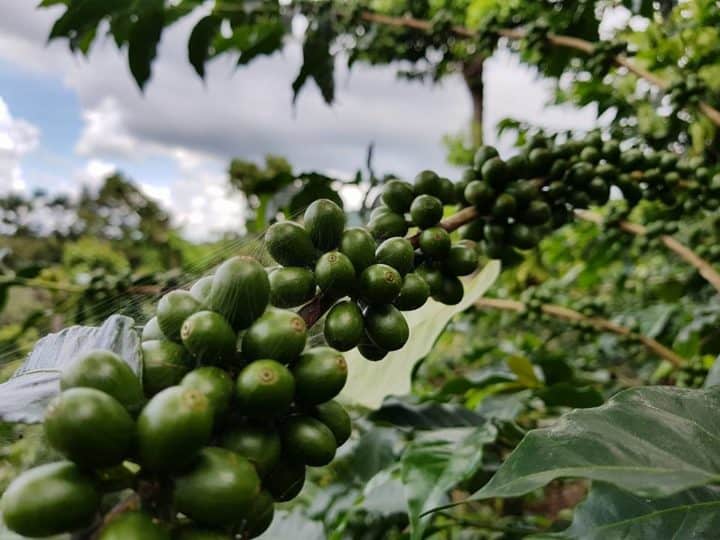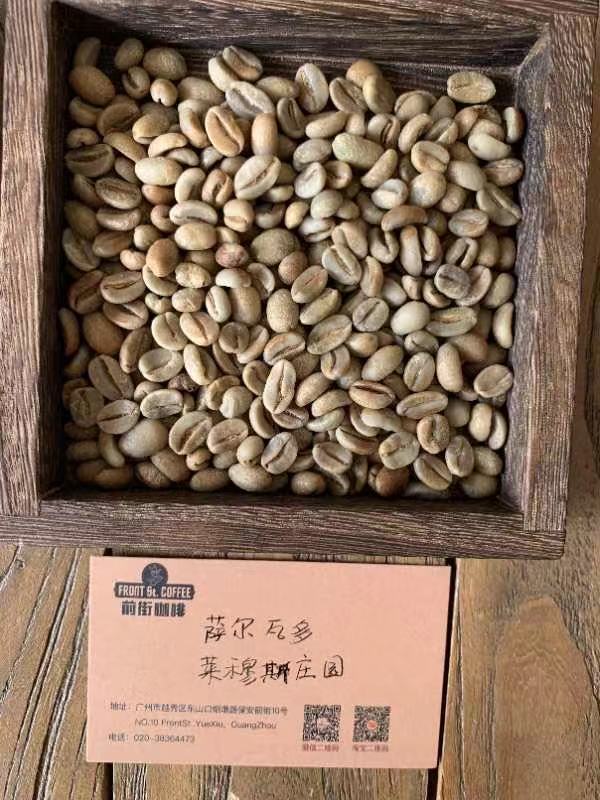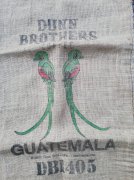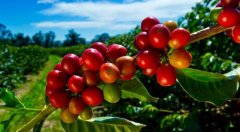El Salvador Coffee turbulent History Story Fair Trade affects El Salvador Black Honey to deal with Coffee Wind
The turbulent history of coffee has left a deep impression on the history, politics and development of El Salvador. No other country in the region is so dependent on coffee, whose fortunes rise and fall sharply with the boom and bust cycles brought about by what Salvadorans call "el grano de oro" ("gold grains"). Coffee, however, treats elites whose wealth rose in good times and survived busts, as well as small farmers and workers who are exploited almost all the time.
Indigo has been El Salvador's most important export crop for many years. In the 1880s, coffee overtook indigo as the main export crop and was seen as a way of progress and development. In fact, coffee creates not only great wealth for the landlord elite, but also opportunities for the rulers.

In 1881 and 1882, the so-called liberal reforms were promulgated, which greatly changed the land use rights of the country. As a result, the peasant class was forced to work in poor coffee, sugar and cotton plantations, depriving nearly half of El Salvador's population of land, and few farmers had more rights to the land than workers' property.
In 1895, General Thomas Ragalado won the presidency. The position enabled him and his family to plant coffee trees on 6000 hectares in six different provinces, expanding coffee's dominance and building its own wealth over the next period.
In the 1920s and 1930s, coffee exports alone accounted for 90% of the country's total exports. However, the global recession of the 1930s pushed El Salvador to the edge. The combination of the strong control of the coffee plantation class and the desperate rural proletariat proved to be as unstable in the 1970s and 1980s as it was 50 years ago.
The coffee industry survived and even prospered after the Great Depression. El Salvador has become one of the most advanced coffee producers through the introduction of modern technology and complex systems in coffee processing into plantations. By the 1970s, El Salvador had become the fourth largest coffee exporter in the world, but neither the land aristocracy nor the modern elite factions were interested in addressing the poverty and chaos associated with the coffee trade. In the late 1980s, El Salvador's elite modernization sector hoped to expand its control over El Salvador's economy and diversify its assets. In the 1990s, 78% of coffee farms and 40% of the total area were in the hands of small producers. In addition, coffee trees account for most of the woodland in the second largest deforested country in the hemisphere, and coffee provides direct employment opportunities for 155000 Salvadorans.
Although today's coffee farmers face many challenges, those farmers organized in Fairtrade cooperatives have received the best prices, as well as technical assistance in coffee production, marketing and export. In addition, because they belong to a global network of fair trade advocates and buyers, they are able to take advantage of development projects and other forms of support from government, non-governmental and religious development agencies.
The first Fair Trade Cafe, Foto Caf é, opened in San Salvador. The cafe only sells coffee from two Fairtrade cooperatives: El Pinal and Las Colinas. Photos on the wall and pamphlets on the table help Salvadorans understand the plight of farmers and the importance of Fairtrade coffee. Cafe owners hope they can start to influence the buying decisions of local Salvadorans while taking advantage of more and more foreign tourists coming to the country.
Fair trade has changed the lives of these farmers and others involved in coffee cooperatives. The more Fairtrade coffee is sold in this country, the more opportunities other farmers have and the greater the impact.

El Salvador has always been one of the favorite coffee producers in Qianjie. Today, I would like to introduce a coffee bean from El Salvador.
Country of origin: El Salvador El Salvador
Producing area: apaneca-llamatepec, Apaneca Mountains
Manor: Lemus Manor finca lemus bella vista
Altitude: 1250 m
Variety: bourbon
Treatment method: black honey treatment
Grade: SHB
Production season: 2020
This coffee bean is roasted in cinnamon color in front of the street. due to the black honey treatment, the sweetness and aroma of this coffee is very obvious. The flavors tested in the cup are citrus, berry, grape and cocoa.
Important Notice :
前街咖啡 FrontStreet Coffee has moved to new addredd:
FrontStreet Coffee Address: 315,Donghua East Road,GuangZhou
Tel:020 38364473
- Prev

History of Origin of Coffee beans in Guatemala, 10th Coffee producer in the World COE bidding Information for Guatemala
Guatemalan Coffee: know the origin of your coffee Guatemala is a relatively small country, but it is extremely diverse in all respects. It has one of the most diverse climates in the world, with 21 Mayan dialects and growing coffee with a variety of flavor characteristics. Although this Central American country has experienced political upheaval and economic destruction from foreign governments,
- Next

Hawaiian Kona coffee has more caffeine? How to eat authentic Hawaiian Coffee
Kona coffee is very popular all over the world. The main reason is the outstanding aroma and rich flavor. What makes Kona beans different from other coffee beans? The really decisive factor comes from the nutrient-rich volcanic soil that makes them thrive. Is there more caffeine in Kona coffee? Some coffee lovers believe that the content of Kona caffeine is responsible for this charming taste.
Related
- Detailed explanation of Jadeite planting Land in Panamanian Jadeite Manor introduction to the grading system of Jadeite competitive bidding, Red bid, Green bid and Rose Summer
- Story of Coffee planting in Brenka region of Costa Rica Stonehenge Manor anaerobic heavy honey treatment of flavor mouth
- What's on the barrel of Blue Mountain Coffee beans?
- Can American coffee also pull flowers? How to use hot American style to pull out a good-looking pattern?
- Can you make a cold extract with coffee beans? What is the right proportion for cold-extracted coffee formula?
- Indonesian PWN Gold Mandrine Coffee Origin Features Flavor How to Chong? Mandolin coffee is American.
- A brief introduction to the flavor characteristics of Brazilian yellow bourbon coffee beans
- What is the effect of different water quality on the flavor of cold-extracted coffee? What kind of water is best for brewing coffee?
- Why do you think of Rose Summer whenever you mention Panamanian coffee?
- Introduction to the characteristics of authentic blue mountain coffee bean producing areas? What is the CIB Coffee Authority in Jamaica?

